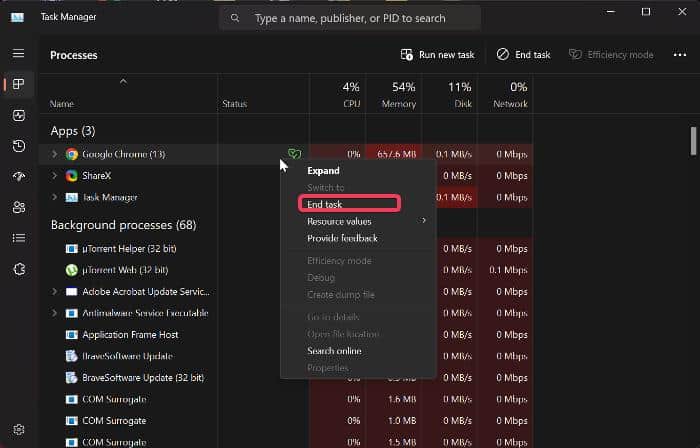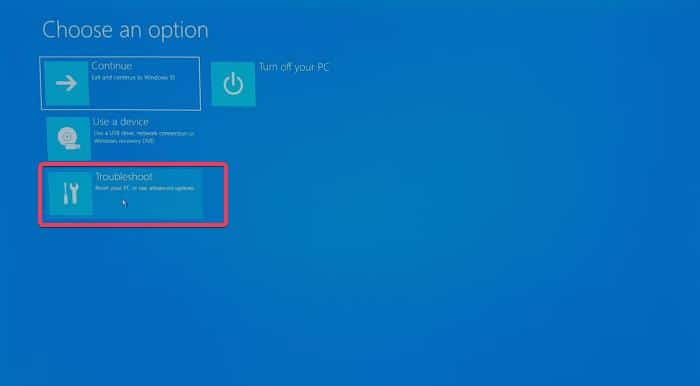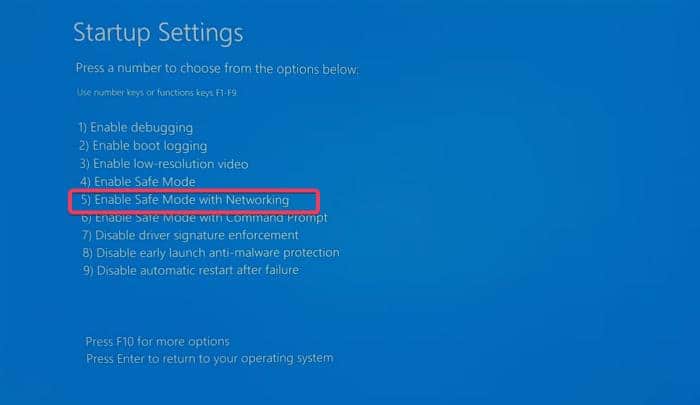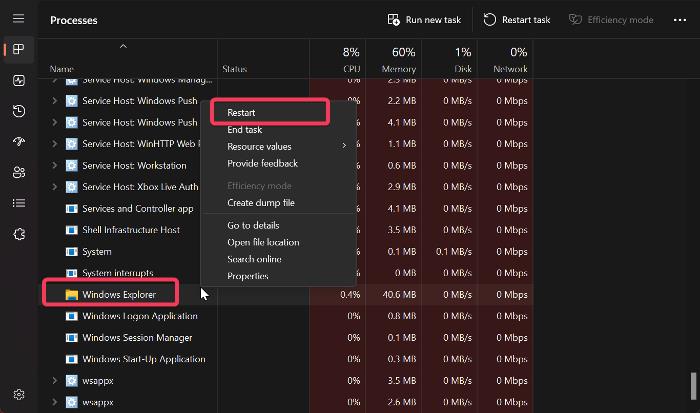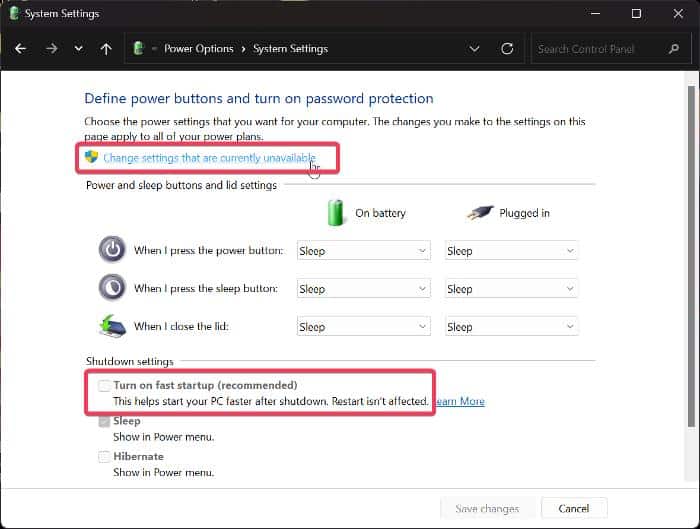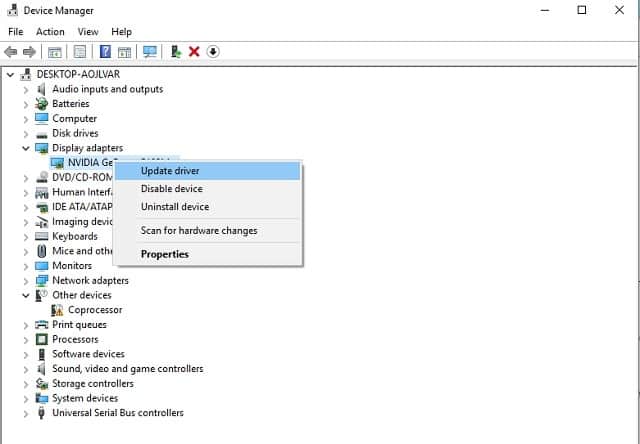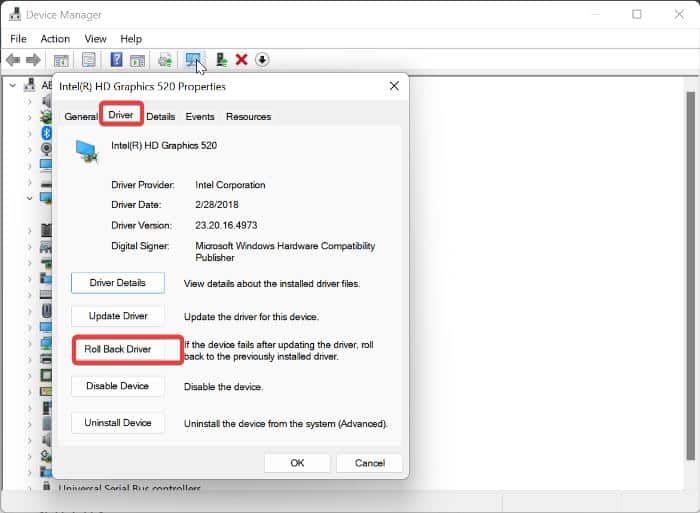With the release of Windows 11, Microsoft made a ton of appealing upgrades to its operating system in terms of features, security, usability, and more.
Unfortunately, Windows 11 also exhibits the black screen of death, an issue that affects many PC users, as a number of users reported having this problem after updating their system.
In this condition, Your computer or laptop turns on and keeps running with the screen turning black. You may or may not be able to see the mouse cursor.
This issue requires distinct troubleshooting techniques due to the fact that your screen simply goes black without displaying any errors, unlike a blue screen of death.
Therefore, if you experience a black screen on Windows 11 PC or Laptop, this article has put together proven solutions to fix the problem and restore your desktop computer to working order.
First, let us look at the causes of Windows 11’s black screen of death before talking about the solutions.
How To Fix Black Screen on Windows 11?
This article covers proven troubleshooting techniques that can help fix the black screen on Windows 11 so that you are able to address the issue on your own.
But before delving into these solutions, you should first make sure your computer hasn’t run out of power by plugging it into a power source and putting it on afterward. If that’s not the case, perform the following fixes:
1. Restart Your Computer
One of the initial actions to perform when you have a black screen on a Windows 11 computer is to restart the PC.
This clears up collected temporary files and generally offers your computer a fresh start if those temporary files or a program conflict is the root of the problem.
To perform this:
- Press the Ctrl + Alt + Del keys together and select the power icon at the bottom-right corner of the resulting page.
- Now click on Restart and wait till your PC boots up.
2. Close Programs Maxing Out Your RAM in Task Manager
Windows 11 computers sometimes display a black screen as a result of high RAM consumption from running RAM-intensive programs.
The recommended action in this situation is to close the program(s) that is maxing out your CPU.
Even if you believe there isn’t a resource-intensive activity running on your computer, it’s best to try this technique to rule out the possibility and maybe solve the problem
Here is how to perform this solution:
- Press Ctrl + Shift + Esc to open the Task Manager on your computer.
- Right-click on each of the RAM-intensive programs under the Processes category and select End task.
3. Start Your Computer in Safe Mode
Another best way to fix a black screen of death is to boot your computer into safe mode. This will start your computer in a minimal state with a small number of files and drivers, which will make it easier to identify and fix the problem’s root cause.
Here is how to enter safe mode from the Windows login page:
- When you get a sudden black screen on your Windows 11 computer, hold down the power button for up to 10 seconds until the computer turns off.
- Now turn on the PC and as soon as you see a logo on the bootup screen, hold down the power button again to turn off the PC again.
- Next, turn on the PC again and press down the power button for about 10 seconds as soon as you have a logo on your screen.
- Turn on the PC again, and if you see Preparing Automatic Repair under the logo, let the computer boot up fully. However, if you don’t see anything under the logo, repeat step 3 above until you see the Preparing Automatic Repair message.
- The message should then change to Diagnosing your PC. After that, you should see the Automatic Repair screen.
- Now click on Advanced options, and select Troubleshoot.
- Click on Advanced options again to enter the Windows Recovery Environment.
- Choose Startup Settings and click Restart on the resulting page.
- After your PC restarts, you will be prompted with different startup options. Now select F5 or 5 to enter safe mode with networking.
When you restart your computer, Windows will launch in safe mode, where you can make the required adjustments and perform troubleshooting to avoid a black screen.
If that issue doesn’t occur in safe mode, then turning on drivers and processes one after the other can help figure out what causes the black screen.
However, if the issue continues, you should be aware that it is very certainly hardware-related, most likely involving one of your RAMs.
4. Restart Your Graphics Driver Windows Explorer
If the collective keystroke on your computer is responsive on the black screen state, you can use this key sequence (Windows + Ctrl + Shift + B) to restart your graphics driver and in turn, wake the PC from the black screen.
This has helped a lot of users that faced black screen issues on their Windows 11 computers and may help you out as well.
Also, you can restart Windows Explorer as well to fix this issue by following the steps below:
- Press Ctrl + Shift + Esc, to open Task Manager.
- Under the Processes tab, scroll down to find Windows Explorer.
- Now right-click on it and select Restart.
5. Unplug Peripherals
Your Windows 11 black screen issue can also be brought on by a USB hub, external hard drive, keyboard, or other peripherals you plug into your computer. Therefore, you should unplug all peripherals and check whether that resolves the problem.
6. Turn off Fast Startup
Most people wouldn’t think about this option, however, it has helped some users with the black screen problem during startup.
If the Windows fast startup causes this problem, it indicates that your computer is having trouble re-initializing itself because it wasn’t actually totally shut off, which is what fast startup typically serves.
The reason for the black screen issue is probably that your computer is having trouble accessing the hiberfil.sys file that is often created by this function for quicker startup while it is booting.
Additionally, the majority of modern PCs don’t really need this Fast Startup option. As a result, you should turn it off by doing as follows:
- Press Windows + R, type control panel in the box, and press Enter to open Control Panel.
- On the Control Panel window, set the View by option to Large icons, then navigate to Power Options and click it.
- Click Choose what the power buttons do on the left pane.
- Now click the Change settings that are currently unavailable option, then uncheck the Turn on fast startup option under Shutdown settings.
- Select Save changes at the button-right corner of the window to effect that changes.
7. Run System File Checker and DISM Scans
Black screens on Windows 11 computers can also be resolved by running SFC and DISM checks, as damaged system files on your computer are possible reasons for the issue.
- Press Windows + S on your computer to open Windows Search, type cmd, and select Run as administrator on the right pane of the search result.
- On the Command Prompt window, type the following commands one by one and hit Enter after typing each of them to run the DISM scan:
DISM /Online /Cleanup-Image /CheckHealth
DISM /Online /Cleanup-Image /ScanHealth
DISM /Online /Cleanup-Image /RestoreHealth
- To run the SFC scan, type the command below and hit Enter:
sfc /scannow
You should restart your computer after this solution to give your PC a fresh start.
8. Update Graphics Drivers
Your computer’s display is controlled by software called graphics drivers, and any problems with them might lead to malfunctions like a black screen.
So to fix the occurrences of black screen on Windows 11, you should update the graphics drivers on your computer. To do that:
- Press Windows + X and select Device Manager.
- Double-click the Display adapters option on the Device Manager window and note the display driver you are having on your computer
- Go to the display driver’s website and download an updated version of the driver.
- Now, go back to Device Manager and right-click your display driver.
- On the resulting drop-down menu, tap on the Update driver option.
- Select Browse my computer for drivers and follow other on-screen prompts to select the driver package you downloaded earlier.
Roll-back GPU Driver
In a case when the issue started after updating your PC’s graphics driver, then there is an issue with the update and you have to roll back the graphics driver to the previous version.
- Open Device Manager on your computer.
- Navigate to the Display adapters option and double-click it to expand its menu.
- Right-click your graphics driver and select Properties on the resulting drop-down menu.
- Switch to the Driver category and click on Roll Back Driver.
- You’ll be taken to another window, where you should select why you are rolling back the driver. After that, click Yes.
9. Uninstall Windows Update
Corrupt or wrongly installed Windows updates open your computer up to a different kind of issue, and the black screen of death is one of them.
Therefore, uninstalling the Windows update will be the best course of action if you recently update Windows 11 and this problem arises later. The steps listed below can be used to accomplish this from the Windows boot screen:
- Enter the Windows Recovery Environment by following the steps discussed in solution 3 of this article.
- Select Uninstall Update on the Advanced options page.
- Choose Uninstall latest quality update if that’s your recently installed update and select the operating system you are using.
- Click Uninstall quality update to start the process and wait until it finishes.
Now restart your computer and check if the issue has been fixed.
10. Run Malware Scan
Running malware scans on your computer should be a regular practice to prevent this problem, as viruses and malware are capable of triggering a wide range of problems on PCs. So to rule out this possibility, run a malware scan on this computer, and hopefully, you should stop getting BSoD issues.
11. Use System Restore
If the aforementioned solutions fail to help, which is rare, this is the last option we’ll recommend you try. By using a system restore, you can return your computer to a time when the black screen of death problem was not an issue.
Only those with recently created restore points on their PC will be able to use this method. Your documents, music, and images will not be affected by System Restore, but it is advised to make a backup of your important data and apps before executing this fix.
This solution can be performed right from the boot page, so you don’t need to worry about accessing Windows on your computer first. Here is how to do this:
- Enter the Windows Recovery Environment by following the steps in solution 3 above.
- On the Advanced options page, click System Restore.
- Click Next on the System Restore window, then select the restore point you want to use. If you can’t find all your restore points, check the Show more restore points box at the bottom of the window.
- Now, click Next > Finish > Yes and wait till the restore completes.
FAQs
Why is my laptop on but the screen is black?
A black screen on your Windows laptop can indicate a black screen of death (BSOD) issue. This is often caused by problems with recently installed Windows updates. However, it can also be caused by corrupt system files, malware, corrupt GPU drivers, and other factors.
Fortunately, this article discusses proven fixes for the black screen on Windows 11 issue. We hope the fixes help!
Can running games on low-end PCs cause a black screen?
Yes, running incompatible games on your PC can lead to a black screen of death. This is due to the fact that when you launch a game like that, it tries to access specific requirements; however, if they are not present, the game freezes your computer and displays a black screen.
How do I bypass a black screen on my laptop?
On a Windows PC that is powered on, one way to get past a black screen is to refresh Windows Explorer. However, if the issue arises during boot-up, you should boot into safe mode using the boot settings. The in-depth explanation of these troubleshooting methods in this article is meant to help you.
Wrap Up
We think one of the aforementioned fixes will help you finally resolve the black screen on Windows 11 issue.

